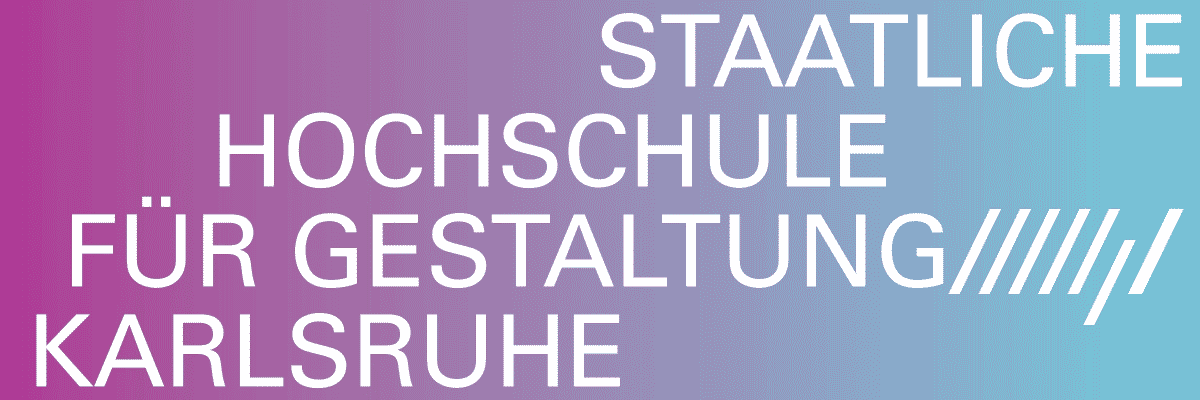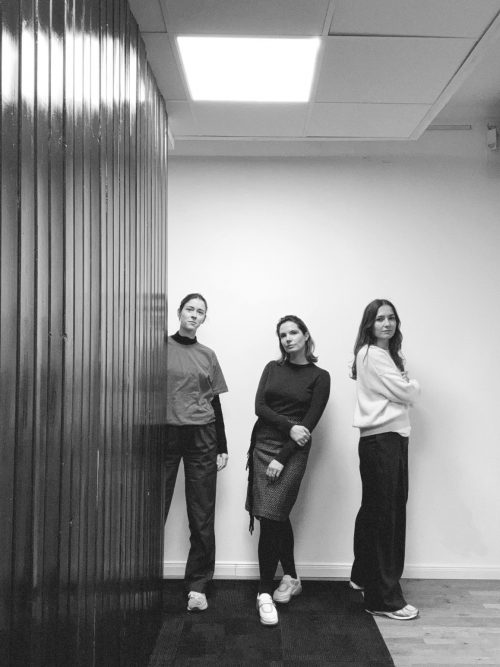
Kinga Bartis
In a one
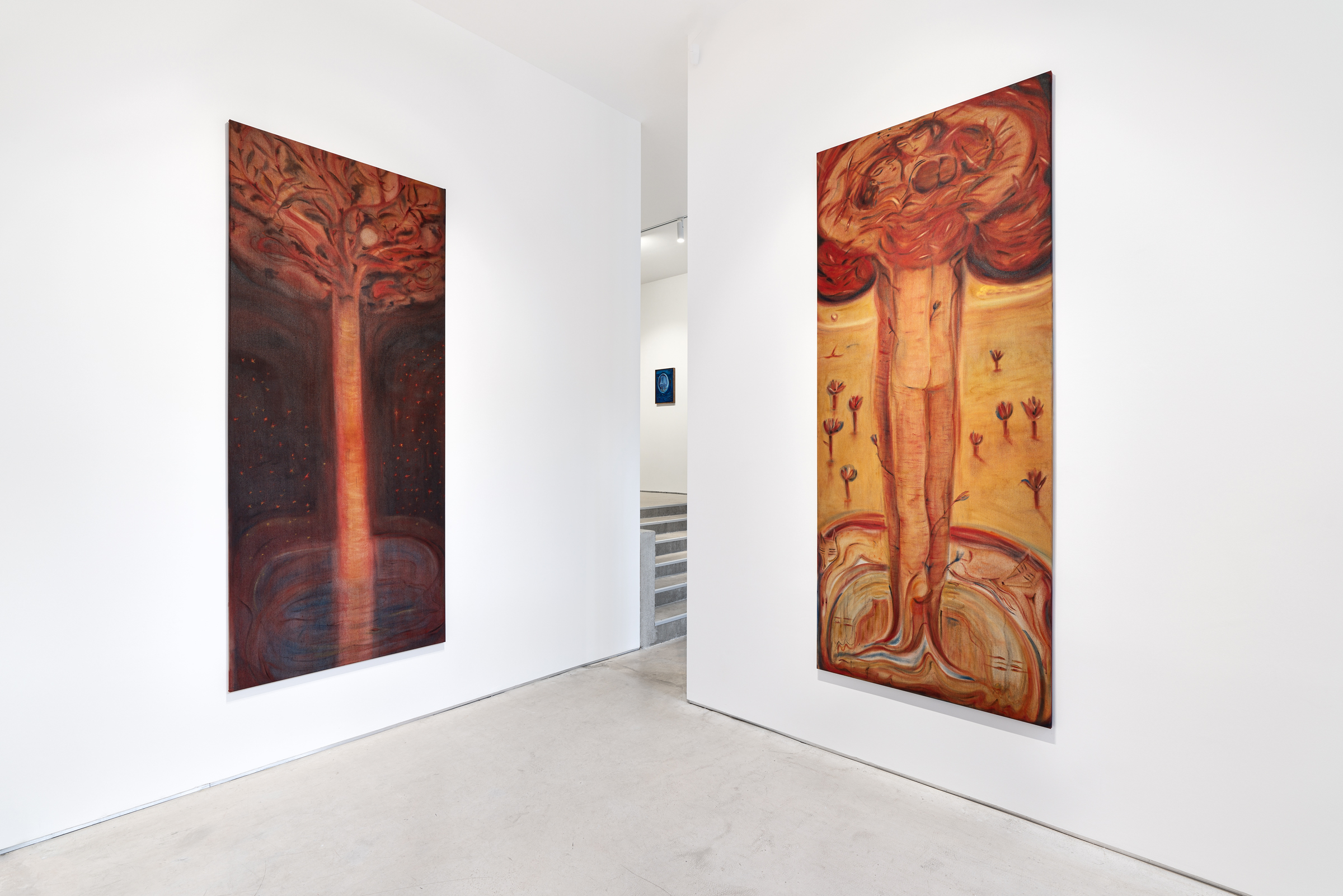
Advertisement
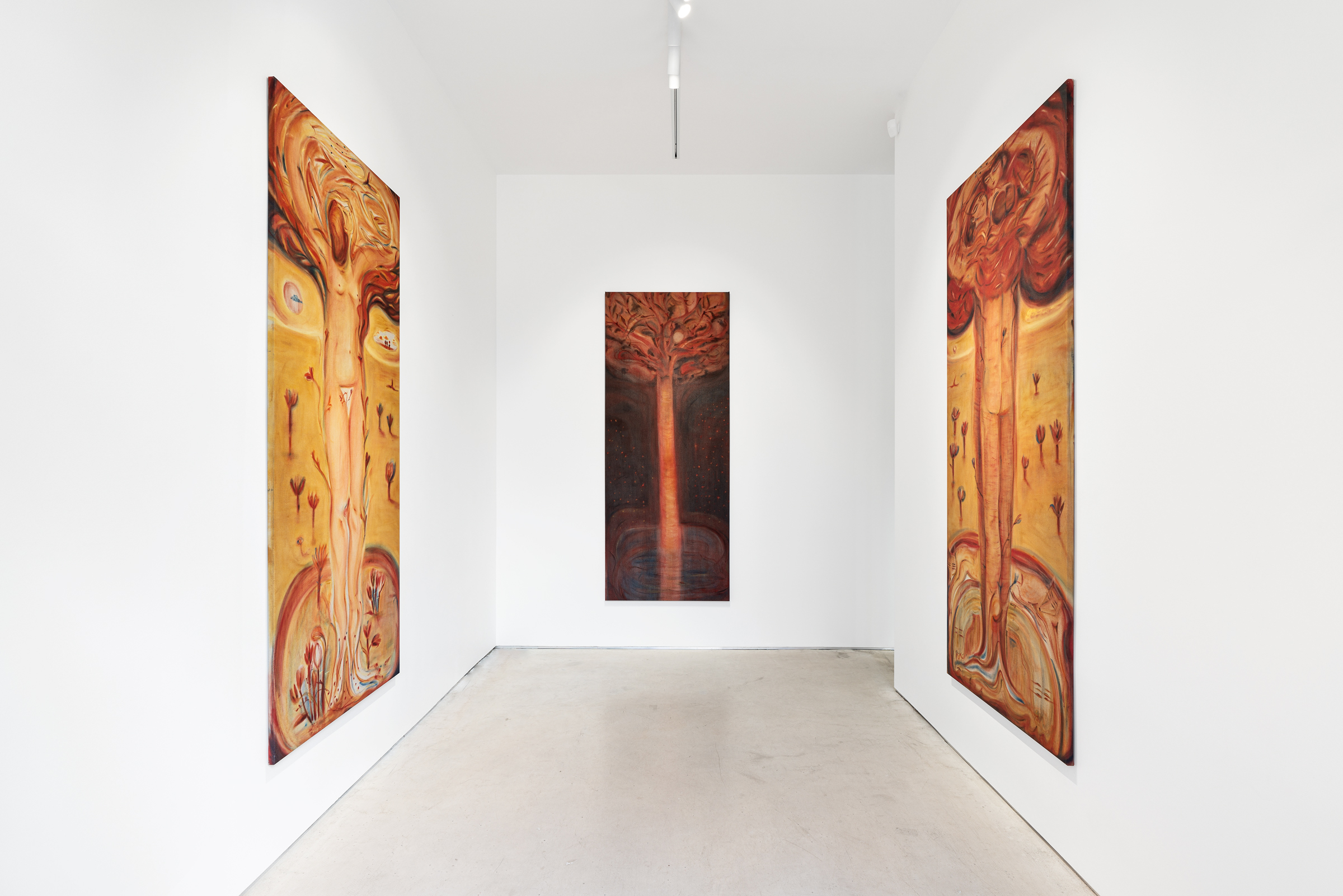
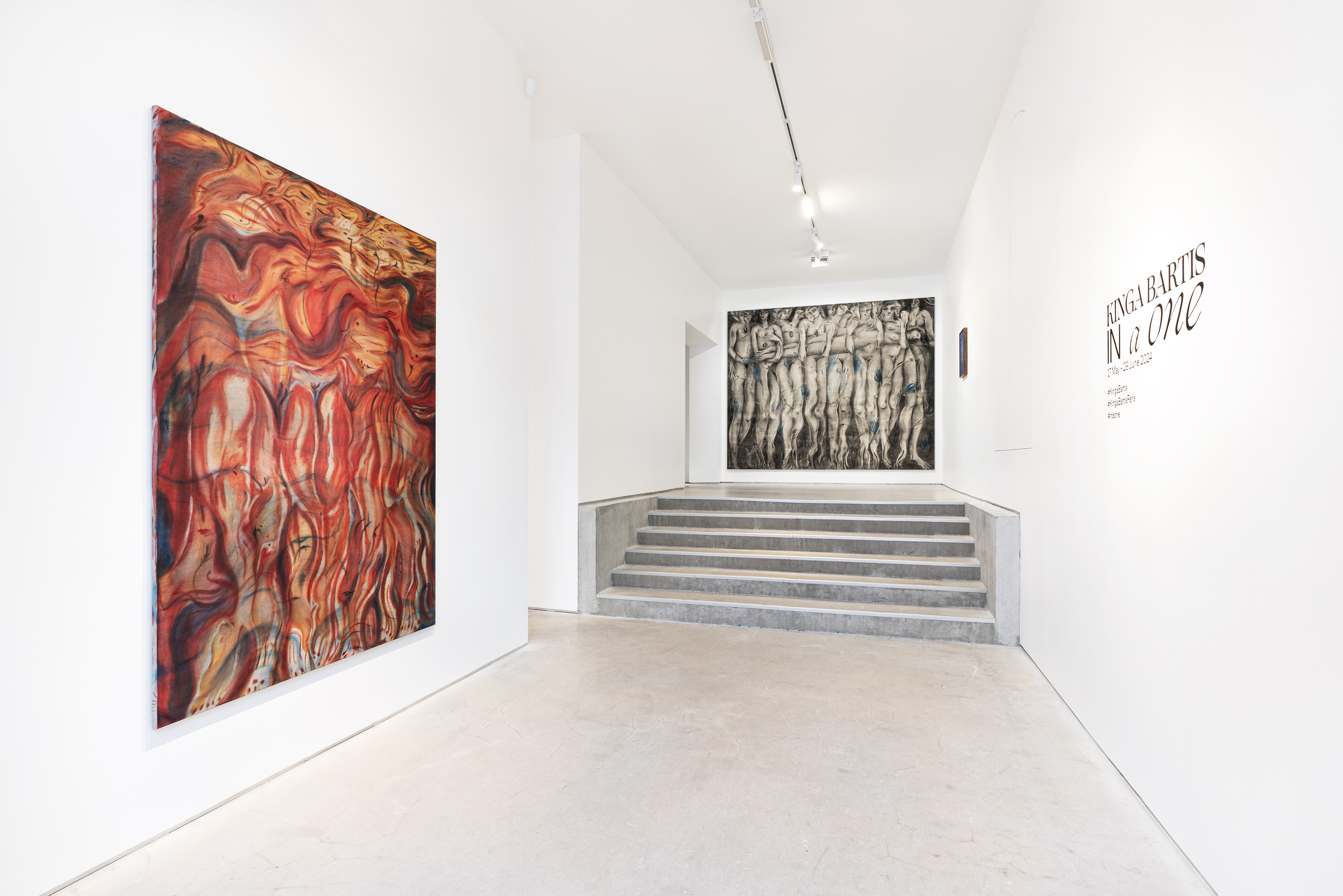


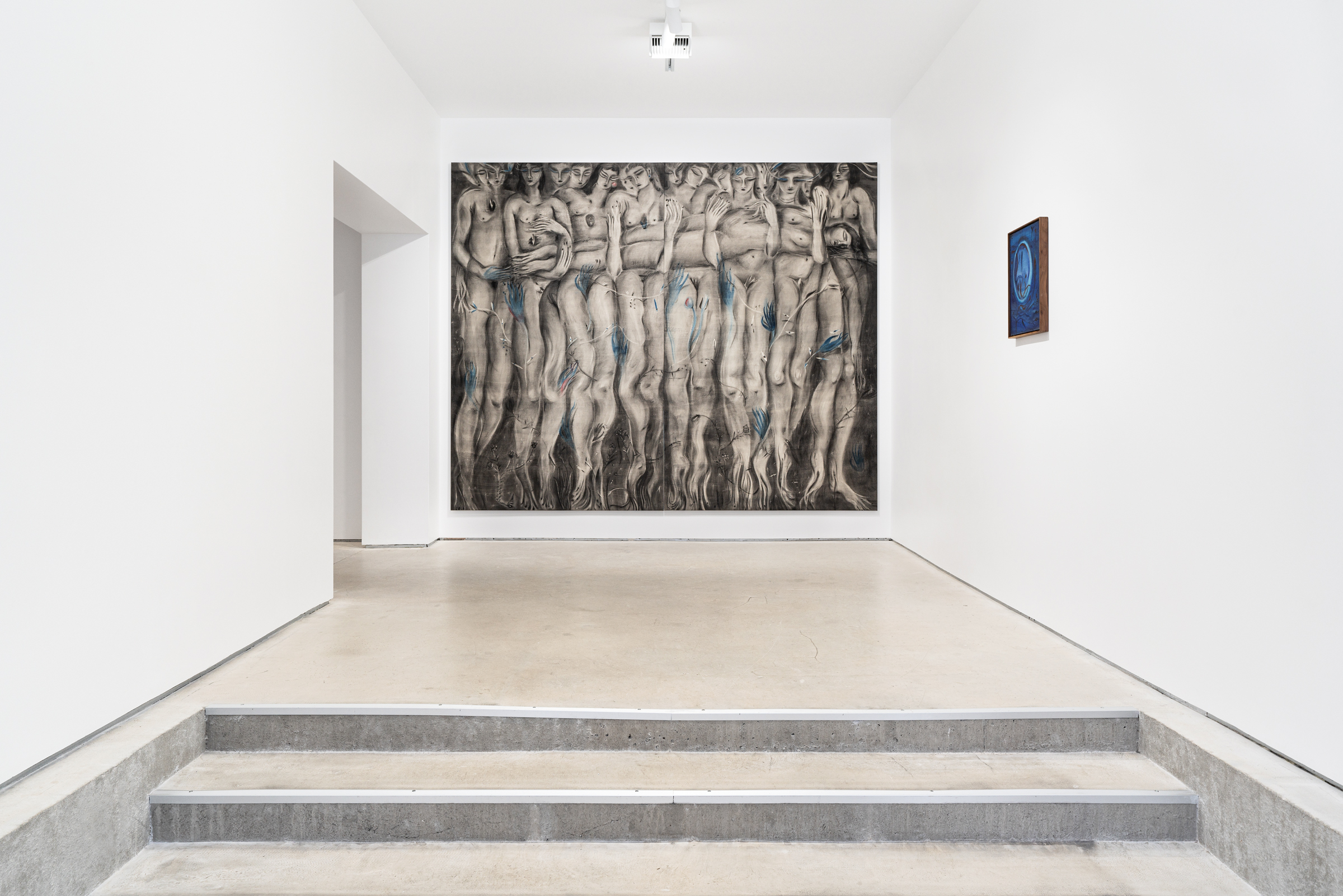
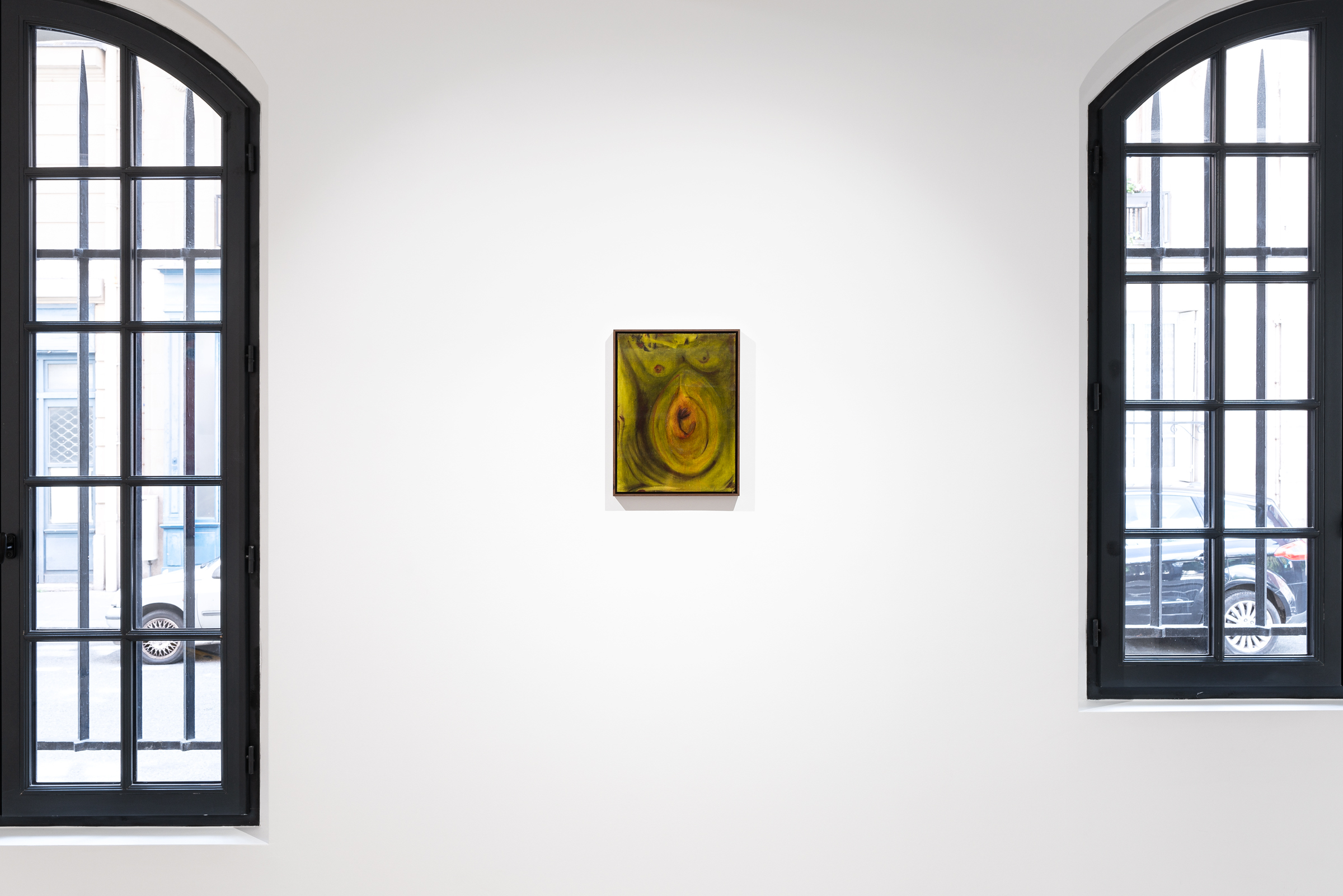
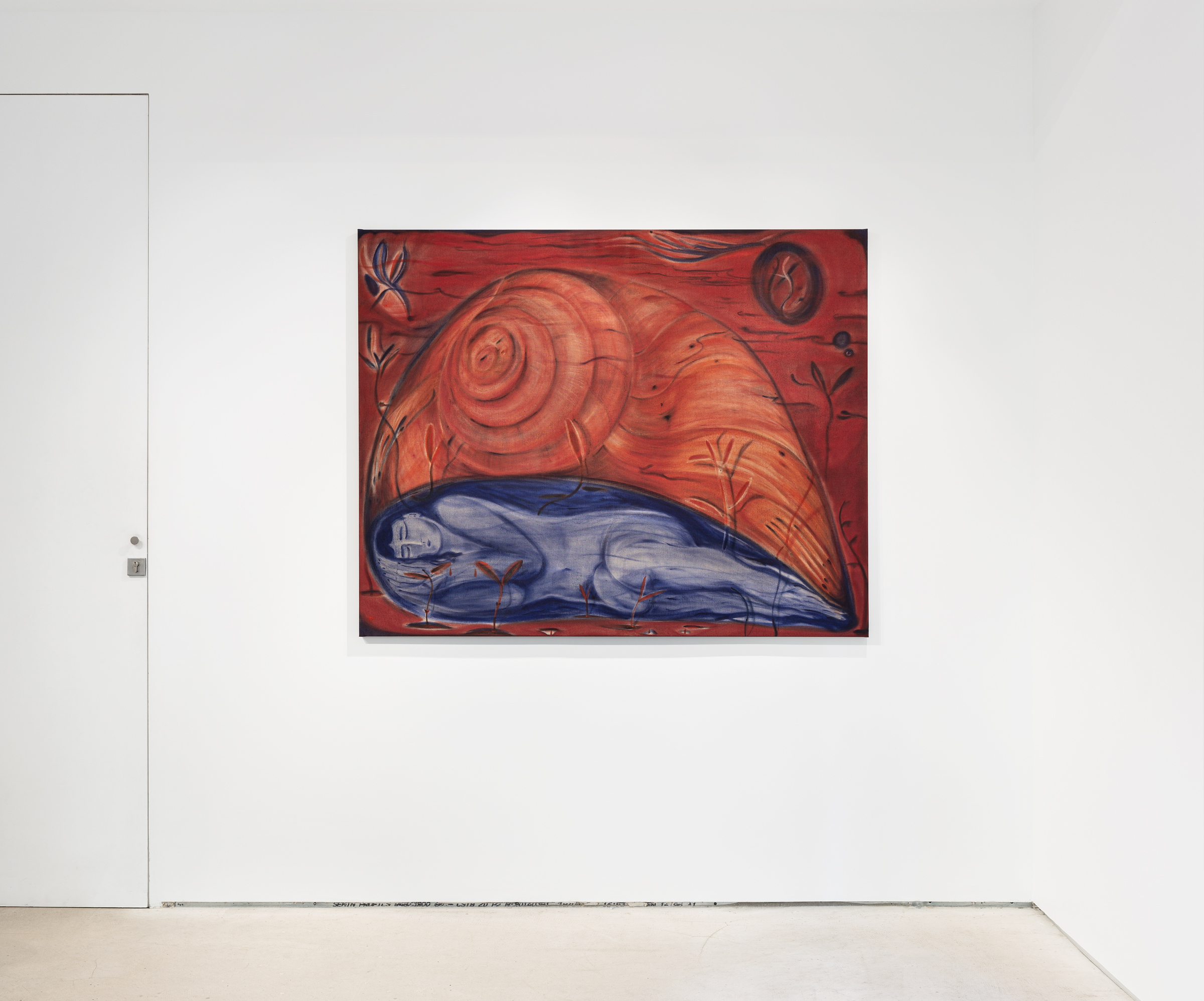



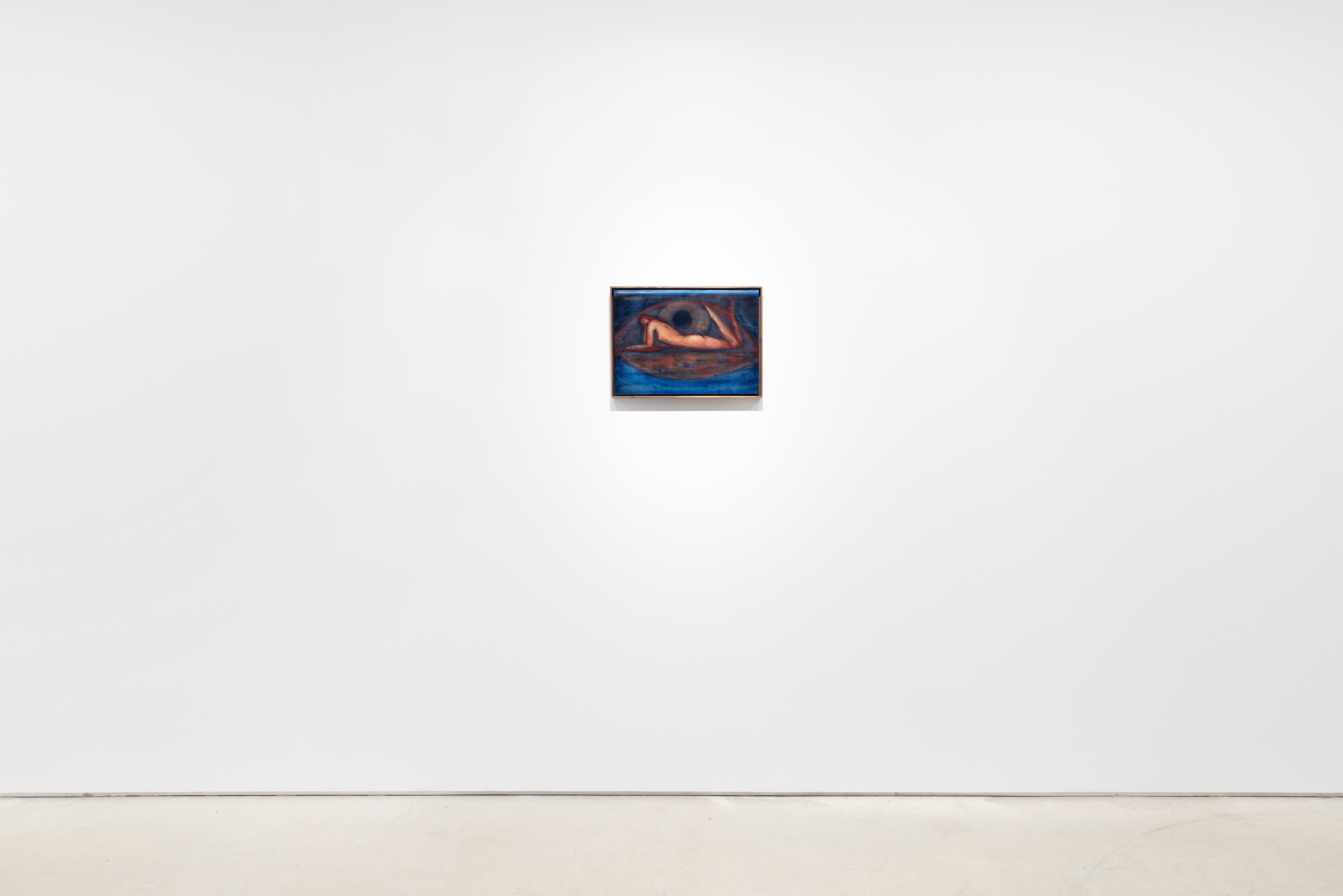
Galerie Marguo is delighted to announce the Paris debut of Hungarian artist Kinga Bartis with In a one, featuring new works created over the past five months between Paris and Copenhagen, on view from 17 May to 29 June 2024.
Kinga Bartis’ paintings swish, tremble, pulse, yawn. Rooted in sensation, they start from an impulse in the artist’s body that travels through the arm, hand, and brush, in sweeping strokes across towering canvases evocative of bodily scales. Rendered fluidly in fiery palettes, this suite of twelve compositions, which range wildly from 3 meters to 30 cm in width, reward sustained looking. Entire landscapes unfold within the crook of a limb. Fingers and feet morph into roots, and birds seemingly bloom from the conflagrations of cirrus-clouded skies. They consider the self in all its fluidities, and trouble – through collapsed foreground and backgrounds, landscapes and figures – the binary distinctions between human and nature, male and female, the individual and the multiple.
In Bartis’ studio, beholding the works, I am awash in a sense of intense loneliness and longing. The alienating experience of being ‘In a one’. Is this not the cruelty of being human, of existing in a body, restrained by corporeal subjectivity? Can we ever really touch another? Can anyone ever truly know us? (Has not every lover, at least once, fantasized of climbing into the skin of their beloved?) Yet this is a fundament of being alive, in this human form. That we each move through this life, through our subjective perspectives, utterly alone. And yet we are never alone, we exist as one molecule in the infinite matrices of the circumstances and contexts from which we emerge. Sometimes this sense of isolation is devastating, fatal even, but one we must all come to terms with: a universal amor fati.
I am writing in the ‘I,’ the ‘writing I,’ but who am I other than a container, a constellation of contexts and relations to other beings that nourish and sustain. The wrench at the heart of Bartis’ paintings is this negotiation of differentiation; of the self as hopelessly individual and infinitely intertwined with the world around it. The self as the shell we carry on our backs, our only real home. In Hydrofeminism: Or, On Becoming a Body of Water, cultural theorist Astrida Neimanis writes, “The space between ourselves and our others is at once as distant as the primaeval sea, yet also closer than our own skin–the traces of those same oceanic beginnings still cycling through us.”
I want to talk about drainage, and fatigue. Neimanis continues, “We have all arisen out of the same primordial soup.” And, as these paintings seem to say, to the primordial soup we long to return. Across the exhibition, bodies crouch and keel over, their edges bleeding into new forms. In Brave are the tiny stones sleeping in wild rivers, two figures in fetal positions lie submerged beneath amniotic waves of blue, positioned on two stones, or kidneys, or lungs, as time and the elements work upon them. This desire of dissolution – a consummation devoutly to be wished – calls to mind a theme within feminist speculative fiction, such as in Anne Richter’s The Sleep of Plants (1967), of women who, tired and wanting to opt out of their prescribed existences, transition into trees. In Lie where the soil is tender and you will become, a titanic charcoal forest of bodies with roots for feet stand shoulder to shoulder, collectively supporting the length of a slumbering supine figure, claiming and nourishing her as one of their own, like a forest’s mycelium network.
Kinga Bartis’ work conjures such alternative, expansive, posthumanist ways of communing. In harmony with the cyclical nature of organic time, this exhibition begins at its end, with the three panels Spektrum of Love, Time for Space, and Rootless Strangers. A central looming tree cast in bright, rich crimson hues is flanked by two rhyming sylvan caryatids. Ambiguously positioned in space and teeming with hidden narratives and lifeforms, the triptych stands like a portal. Not a dead-end but a door.
About the artist
Kinga Bartis’ approach to painting lies outside the boundaries of the classic school of the medium. Eschewing labels, Bartis envisions painting as a means of breaking free from the habitual relationship of defining and
redefining our existence—Bartis chooses to instead look towards a more multidisciplinary and open approach.
This approach can also be seen in Kinga Bartis’ technique and composition. Traditionally defined relationships or perceived hierarchies between foreground and background are set aside. Repeating imagery of bodies, figures, plants, natural elements and landscapes combine to reflect the realities of a shifting world. Often blending one into the other, the resulting ambiguity provides a backdrop for the aforementioned characters to
ebb and flow, almost moving subtly on the canvas, revealing themselves organically.
Reoccurring themes of sexuality, power structures, the body and self-perception can be felt through these motions as they pulsate towards us. Their presence does not suggest a direction that Kinga Bartis’ wishes us to
go in, but rather a mood or a feeling, a platform through which discussions are encouraged.
Kinga Bartist (b.1984, Romania) lives and works in Copenhagen. She holds an MFA from the Royal Academy of Fine Arts, Denmark. Select solo exhibitions include: ‘WhileAway’, Galleri Nicolai Wallner (Copenhagen, DE 2023); ‘Kinga Bartis’, Tranen (Gentofte, DE 2022); ‘Irregulars. Beyond the Current’, Galleri Nicolai Wallner (Copenhagen, DE 2021); ‘Deep, Deep Down Far, Far In’, Outpost Gallery (Copenhagen, DE 2021); ‘The Earthlings and the Otherworlders’, Archway Nightlands Connector Jennifer-See Alternate (Copenhagen, DE 2019). Recent group exhibitions include: ‘Metamorphoser’, Sophienholm Kunsthal (Copenhagen, DE 2022); ‘Københavnertstykker’, Nikolaj Kunsthal (Copenhagen, DE 2022); ‘At Være Til’, Vandrehallen (Hillerød, DE 2022); ‘Vera Icon’, Museet for Religiøs Kunst (Lemvig, DE 2022); ‘Dangerous When Wet’, Copenhagen Contemporary (Copenhagen, DE 2022); ‘The Autumn Show’, Galleri Nicolai Wallner (Copenhagen, DE 2021) and many more. Kinga Bartis’ work is held in the collections of the Statens Kunstfond/The Danish Art Council, Denmark and the Københavns Kommune/Copenhagen Municipality, Denmark.
Mélanie Scheiner

